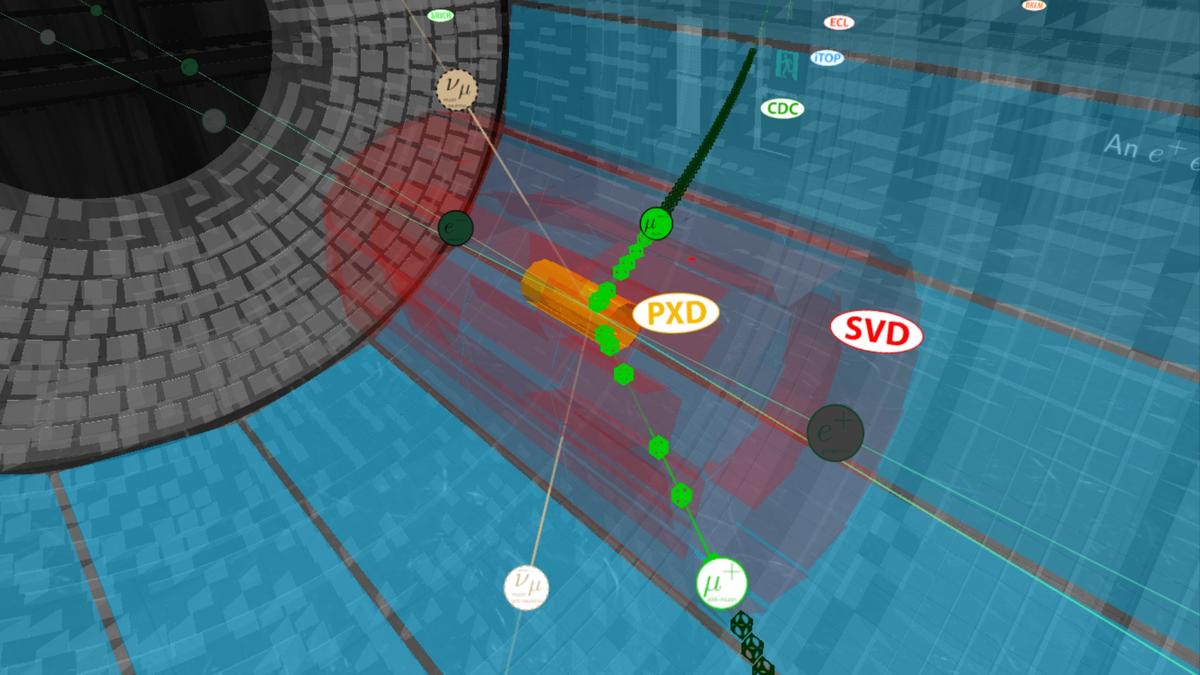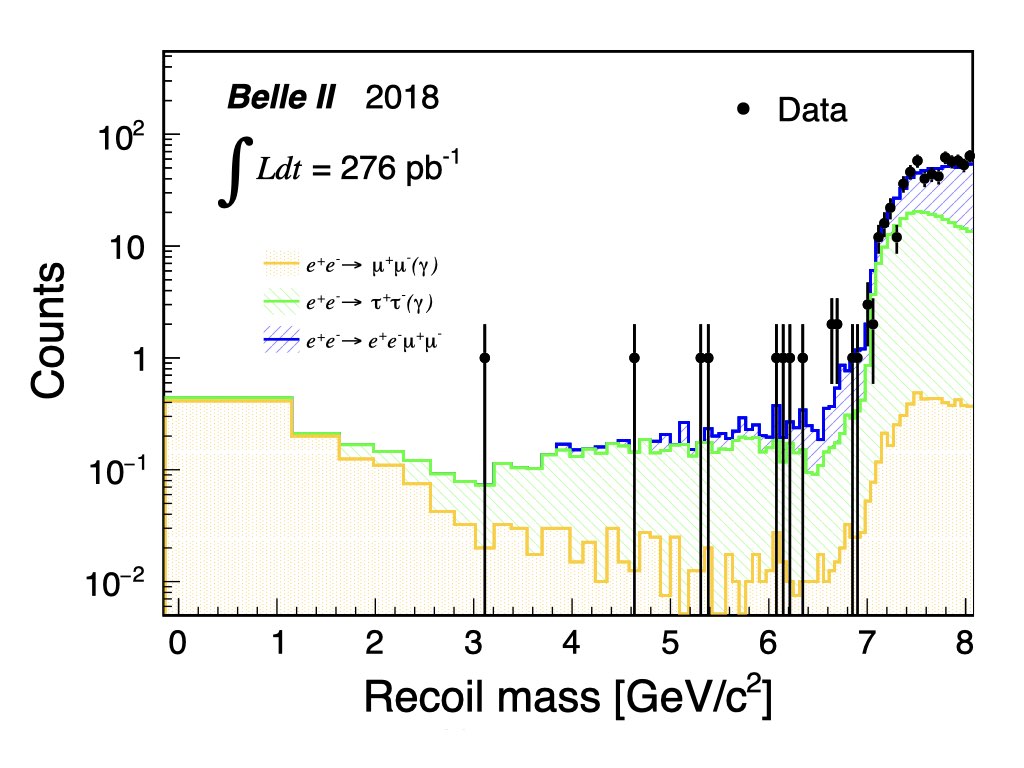Belle II explores new "portal" into dark matter - First results from the Belle II Experiment
#IPNS #Topics
The Belle II international collaboration has published its first results in a paper selected as an Editors’ Suggestion in Physical Review Letters The paper reports the first search for a new type of elementary particle that may act as a “portal” between ordinary matter and dark matter, which is understood to make up some 85% of the matter in the universe.
Summary of the result
The Belle II experiment, which operates at the SuperKEKB electron-positron collider in Tsukuba, Japan, searched for a hypothetical new particle called the Z’ that may act as a “portal” between ordinary matter and dark matter. Belle II data collected in 2018 shows no evidence of the Z’, setting new limits on the properties of such a particle.
Cosmological observations in recent years provide strong evidence that only 15% of the mass of the matter of the universe is known to us, while the remaining 85% is composed of some still undetected and mysterious particles known as dark matter. A great deal of effort in the international particle physics community, including the Belle II experiment, is now focused on finding evidence of dark matter particles.
A Z’ boson is one of the proposed theoretical candidates that might connect dark matter with the ordinary world. If it exists, it could be produced in electron-positron collisions at SuperKEKB and subsequently decay to invisible dark matter particles (Figure 1). Discovery of a Z’ boson might solve important open issues in particle physics related to the behavior of dark matter and resolve some anomalies observed in other experiments that cannot be explained by the reigning theory of particle physics (the Standard Model).

Theoretical models and detailed simulations predict that Belle II could detect a clear signal that Z’ particles are being produced in electron-positron collisions by searching for an excess of events containing a pair of two oppositely charged muons (heavy cousins of electrons). So far, the data show no such signal (Figure 2). Further searches in a much larger data set yet to be collected by Belle II will either reveal a feebly interacting Z’ boson—or rule it out.
This first physics result was obtained by analyzing a small data sample collected during the commissioning of SuperKEKB in 2018. Since 2019, SuperKEKB and Belle II have been collecting data in full operation mode, while steadily improving the performance of these sophisticated machines*1. Eventually, the experiment will acquire 180,000 times more data than used in the first published analysis. With a data sample of this unprecedented size, Belle II will perform many studies related to dark matter, searches for new particles, and precision measurements that will help elucidate the fundamental laws of Nature.
Note added: The data used for this analysis were recorded in 2018. Currently, because of the COVID-19 pandemic, all international travel to KEK is suspended, but the accelerator and experiment continue to operate thanks to the extraordinary dedication of KEK staff and Belle II members stationed at KEK as well as international cooperation through remote internet connections.
*1: The operation of the SuperKEKB accelerator and the Belle II experiment was conducted step-by-step: in “Phase 1” from February to June 2016, commissioning of the accelerator was carried out without the Belle II detector. In “Phase 2” from March to June 2018, the Belle II detector was positioned in the interaction region of the electron and positron beams, and the “first collision” was observed. Then, the vertex detector to measure particle decay points was installed at the center of the Belle II detector. The “Phase 3” operation started in March 2019 to acquire data with the fully instrumented Belle II detector.
Background Information
Background information about SuperKEKB and Belle II, including a glossary of technical terms, is available at https://www2.kek.jp/en/newsroom/2019/03/11/1600/
Contact
Prof. Yutaka Ushiroda
- Institute of Particle and Nuclear Studies (IPNS), KEK, Japan
- yutaka.ushiroda@kek.jp
Prof. Toru Iijima
- Kobayashi-Maskawa Institute for the Origin of Particles and the Universe, Nagoya University
- Institute of Particle and Nuclear Studies (IPNS), KEK, Japan
- iijima@hepl.phys.nagoya-u.ac.jp
Related Images
High resolution photos of this article are available at KEK Public Image Archives. For use with appropriate credit.
Related Articles
Kick-off of the Belle II Phase 3 Physics Run
SuperKEKB Phase 3 (Belle II Physics Run) Starts
【Belle II】QCS Superconducting Magnets for Final Focusing of e-, e+ Beams Connected to Central Beam Pipes inside Belle II, Remote Vacuum Connection (RVC) Works Successfully
【Belle II Experiment】Preparation for Commissioning in Full Swing after Successful BEAST Detector Installation